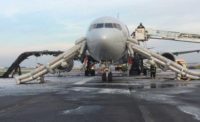An engine part that separated from a plane while in flight caused a cascade of problems that forced the aircraft to make an unplanned landing, according to the National Transportation Safety Board (NTSB), which investigated the incident.
Fortunately, Southwest Airlines flight 3472, which was enroute from New Orleans, Louisiana, was able to land safely, although the passengers who thought they were headed to Orlando, Florida found themselves in Pensacola instead.
The NTSB’s report on the Aug. 27, 2016 uncontained engine failure showed what can happen when something goes wrong with one part of an airplane, in this case, the left engine inlet.
How it happened
When it separated from the engine in midair:
- Debris was expelled, damaging the wing and empennage and tearing a 5” by 16” hole in the left fuselage, just above the left wing
- The cabin was depressurized
- A fan blade separated from the fan disk
The passenger interior compartment was not penetrated.
What we've learned
The NTSB Materials Laboratory found that:
- The fracture surface of the missing blade showed curving crack arrest lines consistent with fatigue crack growth. The fatigue crack region was 1.14-inches long and 0.217-inch deep,
- The center of the fatigue origin area was about 2.1 inches aft of the forward face of the blade root. No surface or material anomalies were noted during an examination of the fatigue crack origin using scanning electron microscopy and energy-dispersive x-ray spectroscopy, and
- The blades are manufactured of a titanium alloy and the root contact face is coated with a copper-nickel-indium alloy.
NTSB Senior Aviation Investigator Tim LeBaron, the Investigator-in-Charge, is leading a team with expertise in the areas of airworthiness, powerplants, and metallurgy. The flight data recorder and the cockpit voice recorder were shipped to the NTSB Recorder Laboratory and the data from each were downloaded.
Parties to the investigation include the Federal Aviation Administration, Southwest Airlines the Southwest Airlines Pilots Association, and CFM International. The French Bureau d’Enquêtes et d’Analyses pour la sécurité de l’aviation civile has appointed an accredited representative who is supported by a technical advisor from Safran Aircraft Engines. CFM International is a joint venture between GE Aviation [US] and Safran Aircraft Engines [France].
Future work will include 3-D measurements of the contact areas of all the blades, a non-destructive examination of the blade surfaces for cracks, and a review of the engine maintenance records.


